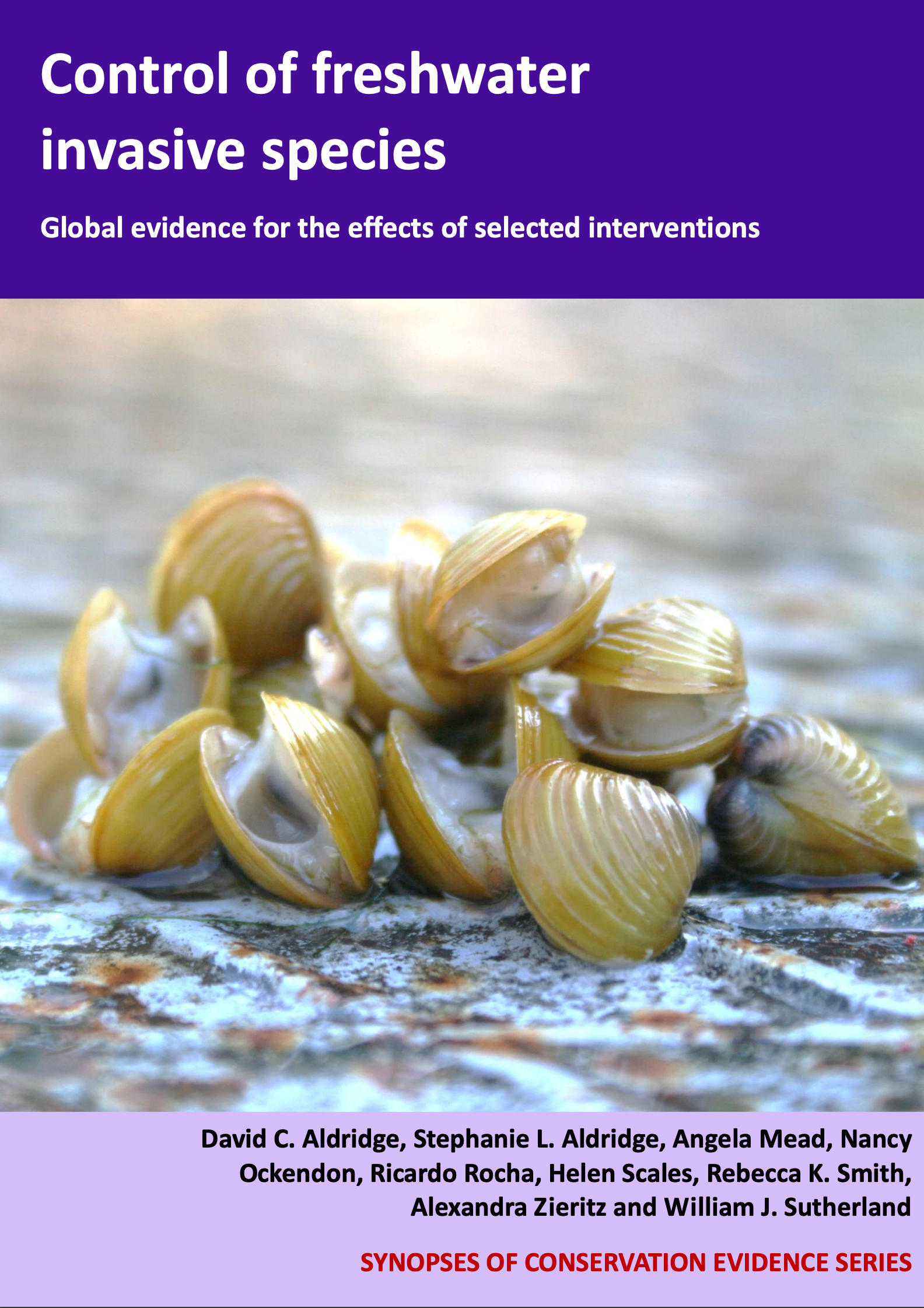Parrot’s feather: Use of herbicides - triclopyr
-
Overall effectiveness category Likely to be beneficial
-
Number of studies: 5
View assessment score
Hide assessment score
How is the evidence assessed?
-
Effectiveness
60% -
Certainty
55% -
Harms
0%
Study locations
Supporting evidence from individual studies
A small, replicated, controlled, laboratory study conducted between 1999 and 2000 in New Zealand (Hofstra et al. 2006) found that the herbicide triclopyr reduced the growth of parrot’s feather Myriophyllum aquaticum. After 17 weeks, plants treated with triclopyr had a lower dry weight (1–2 g) than that of untreated plants (274 g). Plants were grown for approximately two months prior to herbicide application in 60 l plastic tubs. Triclopyr was sprayed onto plants in three tubs at a concentration of 2 and 4 kg/ha and plants in four tubs were left untreated.
Study and other actions testedA replicated, controlled field study conducted between 2001 and 2002 in a wetland in the Northern Island of New Zealand (Hofstra et al. 2006) reported treatment with the herbicide triclopyr reduced vegetation cover of parrot’s feather Myriophyllum aquaticum plants soon after application, but after 28 weeks cover was similar to pre-treatment levels. Results were not subject to statistical tests. After 10 weeks and following a second herbicide application, vegetation cover of treated plants was lower (1.5%) than of untreated plants (47%). However, after 28 weeks, vegetation cover of treated plants (68–84%) was similar to that of untreated plants (97%). Authors reported that the increase in vegetation cover resulted from the encroachment of plants from outside sprayed areas rather than due to regrowth in treated plots. Triclopyr was applied at concentrations of 2 and 4 kg/ha. Each herbicide concentration was sprayed into three 5 x 5 m plots and three plots were left untreated. Herbicides were applied in early summer (December). A second application took place 51 days after the initial treatment.
Study and other actions testedA replicated, before-and-after field study conducted between 2002 and 2003 in two drains in the Northern Island of New Zealand (Hofstra et al. 2006) reported a reduction in the cover of parrot’s feather Myriophyllum aquaticum after the application of the herbicide triclopyr. This result is not based on statistical tests. The areas occupied by parrot’s feather were greater before herbicide application (35 m2 and 128 m2) than following herbicide application (22 m2 and 2 m2, respectively). Authors reported that native species such as Potamogeton cheesemanii and Persicaria decipiens were either not affected or recovered quickly, although no data were presented. Triclopyr was applied at a concentration of 4 kg/ha into two sections with a low density of parrot’s feather (one 3 m x 2 km and the other 1 km long, being 3 m wide in the first 500 m and 1 m wide in the remaining 500 m). Application occurred during the spring and summer of 2002 to 2003 and vegetation cover was assessed visually.
Study and other actions testedA small, replicated, controlled, laboratory study conducted between 1999 and 2000 in New Zealand (Hofstra et al. 2006) found that the vegetation cover of parrot’s feather Myriophyllum aquaticum plants treated with triclopyr was lower than that of plants treated with the glyphosate. One year after exposure, the vegetation cover of plants treated with triclopyr ranged between 0 and 13% whereas the vegetation cover of plants treated with glyphosate was 73%. The percentage cover of untreated plants was 83%. Plants were grown for approximately two months prior to herbicide application in 60 l plastic tubs. Triclopyr was applied at concentrations of 2, 4 and 8 kg/ha whereas glyphosate was sprayed onto plants in four tubes at a concentration of 3.2 kg/ha and plants in four tubs were left untreated.
Study and other actions testedA small, replicated, controlled, laboratory study conducted between 2007 and 2008 in the USA (Wersal & Madsen, 2010), found that the application of the herbicide triclopyr reduced growth in parrot’s feather Myriophyllum aquaticum. After six weeks, the dry weight of parrot’s feather plants treated with triclopyr was lower than that of untreated plants (3–6 vs 10 g/pot). Subsurface and foliar herbicide applications led to similar changes in biomass. Six weeks after application, triclopyr had controlled parrot’s feather by 15–70% (visual assessment with 0% corresponding to no control and 100% to complete control). Parrot’s feather shoots were propagated in 3.78 l pots and placed inside 246 l containers filled with water. Each herbicide rate (subsurface: 1.25 and 2.5 mg/l; foliar: 6.7 kg/ha) was applied to four 246 l containers, each holding four plants. Number of plants used as control is not presented and control in the context of the visual assessments was not clearly defined.
Study and other actions tested
Where has this evidence come from?
List of journals searched by synopsis
All the journals searched for all synopses
This Action forms part of the Action Synopsis:
Control of Freshwater Invasive Species
Control of Freshwater Invasive Species - Published 2017
Control of Freshwater Invasive Species Synopsis





)_2023.JPG)














